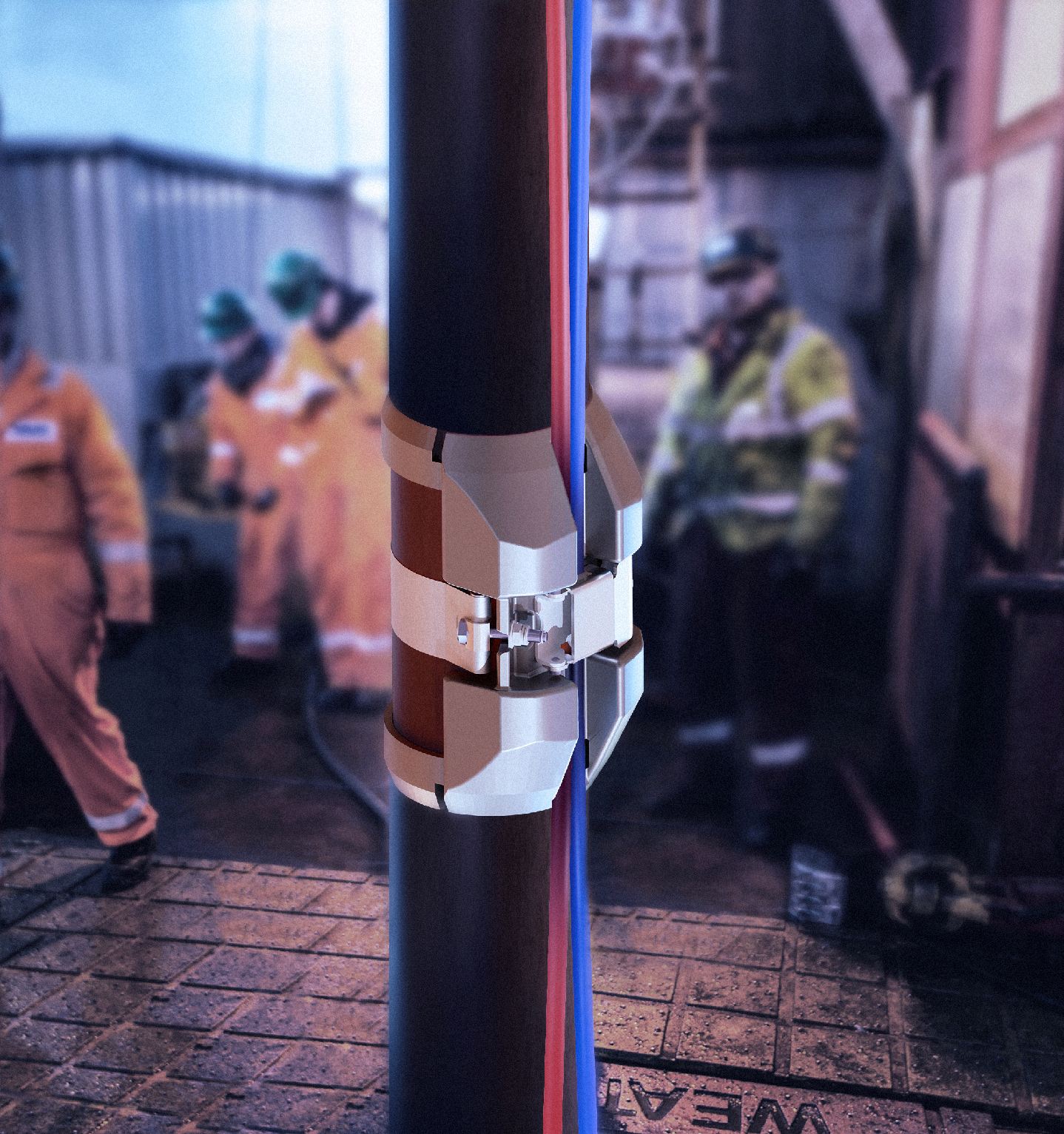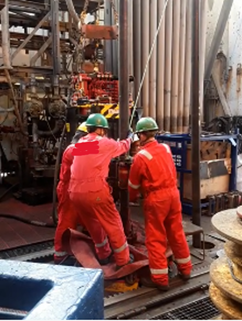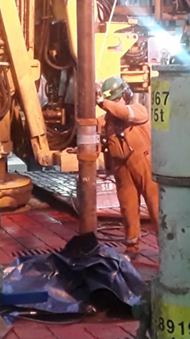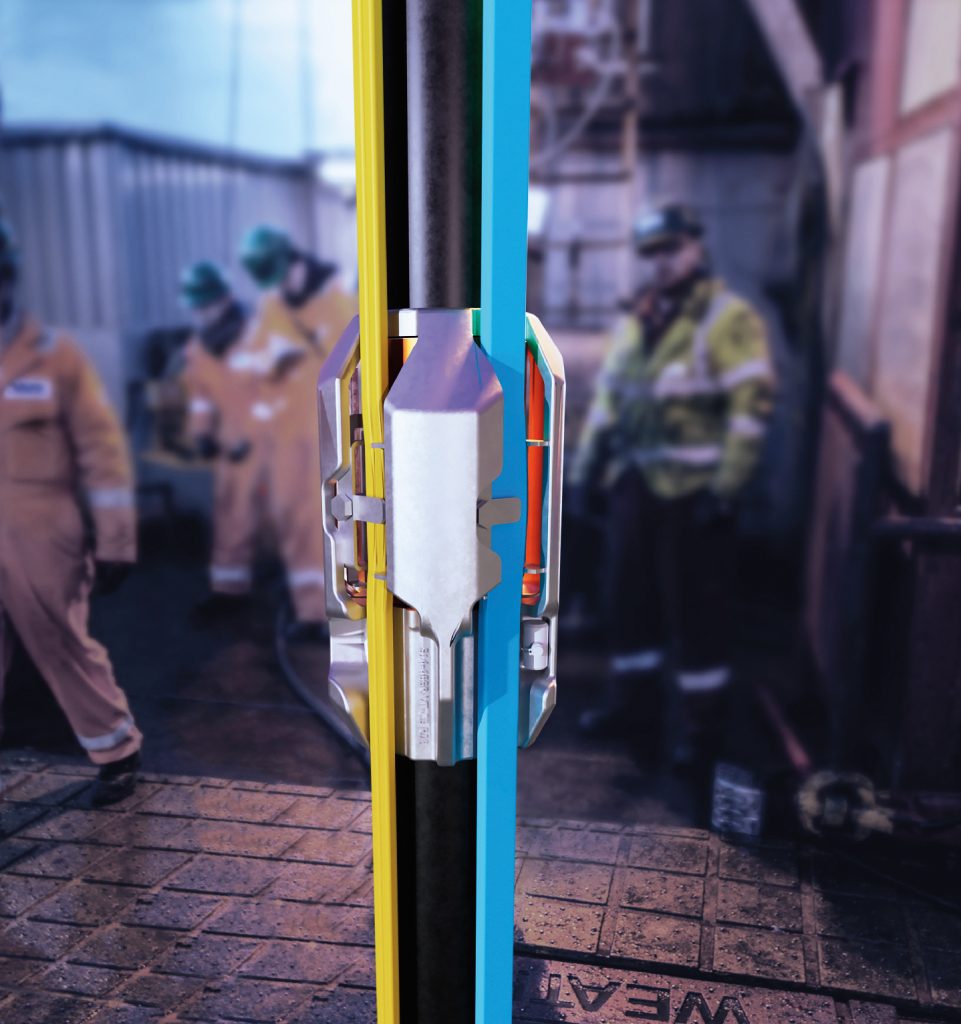Vallourec’s PICP improves safety and efficiency for offshore operations
The PICP (Pre-Installed Cable Protector) is a device that protects downhole control lines or data cables during well completions. It is pre-installed on tubulars during rig preparation operations, eliminating the need for manual handling and lifting of traditional cable protectors on the drill floor.
This reduces the exposure of personnel in the hazardous area around the rotary table, commonly known as the ‘redzone’, and also saves time during the run-in-hole (RIH) process. Vallourec has successfully deployed PICP for major Independent Operating Companies in the UK Continental Shelf and in Azerbaijan, demonstrating the benefits of this technology for both safety and efficiency.

Enhanced performance vs. traditional cable protectors

Traditional cable protectors are installed across the tubing connections only after those joints have been fully torqued together. The installation of these devices typically requires three or four personnel working around the rotary table on the drill floor to lift the cable protector into position, insert the cables and fully energize the cable protector. This exposes the workers to the risk of injury from the heavy tubulars, the equipment used to handle and torque them and the open well bore at the rotary table. Moreover, this process adds time to the RIH cycle, as the cable protector installation has to be completed at every joint.
PICP, on the other hand, is pre-installed on tubulars during rig preparation operations onshore, before the joints are torqued together. This means that there is no longer any requirement for the manual handling or lifting of cable protectors in and around the redzone. The cable insertion and final energizing of the PICP can be carried out by just one operator, using a single tool that torques the one PICP bolt. This provides a huge reduction in redzone activity and therefore a great improvement in safety, when compared to traditional cable protector use. In addition, PICP simplifies the RIH process, as the cable protector installation is done offline and does not interfere with the tubing connection.
PICP in action: IOC offshore operations
Vallourec has been working with major International Operators to deploy PICP in offshore operations in the UK and in Azerbaijan. In both regions, PICP has been shown to improve safety and efficiency for well completions where they are deployed with downhole cables.

In the UK offshore sector, PICP has been used in wells where previously only traditional cable protectors were used. Data analysis of RIH timings from five installations using traditional cable protectors has shown that the average slip-to-slip cycle time was 6.4 minutes. The slip-to-slip cycle is taken from setting slips on the main tubing string already in the well, picking up the next tubing joint, attaching and torquing that joint to the main string, installing a cable protector, lowering the string into the well and finally setting the slips again ready for adding the next tubing joint. When using PICP, this average timing has been shown to be reduced to 5.7 minutes, which provides an average time saving of close to 45 seconds per cycle. Therefore, over a 300 or 400 joint completion, PICP would reduce the RIH time by between 3 to 5 hours.
For the Azerbaijan operations, PICP was installed on a partial string as a trial for an Integrated Oil Company (IOC), with traditional cable protectors being used on the remaining string. This allowed for direct timing comparisons between the two styles of cable protectors on one completion. The RIH using the traditional cable protectors took an average slip to slip cycle time of 12.81 minutes. When PICP was used, this time was reduced to 12.21 minutes, again providing the operator with a time saving of nearly 45 seconds for every cycle which would provide several hours saved over a whole completion. This initial trial will soon be followed by a second using a different PICP model for a smaller tubing size, with similar results expected! Vallourec is also now discussing with the IOC to switch fully over to PICP for future wells.
Leveraging these successes, Vallourec is developing new versions of PICP that can support and protect multiple cables and flat packs, expanding the range of applications for this technology. Vallourec expects PICP to become an industry leading technology that enhances the performance and safety of oil and gas operations globally.

